Business
10 Most Outstanding Japanese Women in History
Every nation has outstanding women who have been remembered for generations for their actions and deeds that influenced the destiny of their country. In today’s article, we will talk about 10 Japanese women who have radically influenced the development of their country in their time. Most of these women have achieved fame abroad, which is another hallmark of success in Japan.
All of the women on this list are well known among Japanese people. Ready to test your knowledge of prominent women in Japan? Then let’s go through history, from 973 to the present day.
Murasaki Shikibu (973 – 1025)
The writer Shikibu is the author of “The Tale of Genji,” written between 1000 and 1012, during the Heian period. This work is considered the world’s first novel. In those days, women were deprived of the opportunity to learn classical Chinese, but Sikubu’s father gave her the opportunity to study with her brother. An advanced child beyond her years, she immersed herself in the study of the Chinese language, but hid her abilities so as not to arouse the scorn of adults.
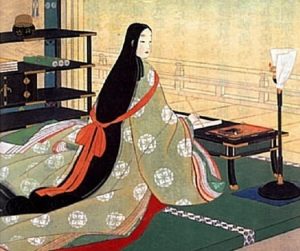
While living at the court of the imperial family, where she served as a maid of honor to Empress Akiko, Shikibu kept a diary in which she wrote about the activities of the fictional Prince Genji, supplementing it with various trivia from real court life. Such “poetic tales” are a genre of poetic biography in which reality is mixed with fiction, resulting in works of “Japanese prose. Such writing found favor among women, especially court ladies, wives and daughters of courtiers, while men still preferred to write in classical Chinese. An English translation of the Tale of Genji, consisting of six volumes, appeared in 1933.
Misako Shirasu (1910 – 1998)
A publicist and expert on aesthetics and design, Shirasu began studying Noh theater at the age of four, and at 14 she became the first woman to perform on the Noh stage.
Misako Shirasu grew up in a good family. She attended a preparatory school in the United States. On her return to Japan she married, and in 1942 she and her husband moved to a farm far away from likely bombing targets. In all likelihood, this was a pivotal moment in her life. It was during this time that Cirasu learned to appreciate a simple, austere way of life. She became an advocate of simple aesthetics and design surrounded by nature.

Sirasu believed in mixing ideas to arrive at practical ways of living. Regarding design, she emphasized that imperfections are the defining beauty of an object, a valuable natural vice, an unforeseen treasure or “natural imperfection.” Instead of creating art, she suggested that people put their souls into creating something with great effort and skill. Cirasu also said that folk art should be a little clumsy.
She devoted herself to exploring the relationship between art and nature. Sirasu used the flower arrangement as an example: once the flowers are put in a vase, we can understand for the first time the essence of the flower in a controlled and observable format, when we can appreciate it on another level and give it new life. She saw that the beauty of nature includes food and art. These values still live on in Japanese art and design. The house where she lived with her husband is called Buaiso, now a museum open to the public.
Masako Katsura (1913 – 1995)
Professional billiards player “Katsy” was the only professional woman player in Japan in the 1950s. She was also the first woman to play in a world billiard tournament. Masako Katsura learned the game at age 13, thanks to her older sister’s husband, who owned a billiard shop. In 1958 she participated in 30 shows, and the following year she appeared twice on American television (once on CBS, the other on ABC).

Masako married an American army sergeant and moved from Japan to the United States. Katsy wrote two books in Japanese on billiards, Introducing Billiards (1952) and Improving Your Billiards Game (1956). She eventually returned to Japan and lived with her sister. Five years after her return to her homeland she died, this happened in 1995.
Hanae Mori (1926)
Hanae Mori is the most famous female designer from Japan. She is also considered an icon of free women. Mori used fashion design as a way to promote the interaction of aesthetic values between East and West.
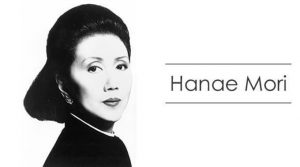
As a young woman, Mori studied at a local sewing school. She later opened her own boutique in Ginza and created a clothing collection. She entered the world of high fashion in Paris, influenced by Coco Chanel. In 1976 she opened a salon in Paris and was appointed a member of the Chambre Syndicale de la Haute Couture, becoming the only designer from Japan to be included in Haute Couture. Mori’s designs have appeared on the cover of Vogue magazine. Her designs include: uniforms for Japan Airlines flight attendants, Japanese athletes’ uniforms for the Summer Olympics in Barcelona, and a kimono and wedding dress for Japanese Princess Masako.
Mori also has a perfume collection and a Hanae Mori Barbie doll. Mori supports young designers through her Hanae Mori Foundation.
Sadako Ogata (1927).
Diplomat Few women are as impressive as Sadako Ogata, who held a post at the Japan International Cooperation Agency until she was 85. She was chair of the United Nations High Commissioner for Refugees from 1991-2001, on the Executive Board of UNICEF from 1978-1979, and president of the Japan International Cooperation Agency, where she served from October 2003 to April 2012.

Sadako Ogata has also received the Indira Gandhi Award and the J. William Fulbright Award for International Understanding, in addition to many international awards. In 2001, she accompanied then-Prime Minister Mori to Africa, the first visit of a Japanese prime minister to the African continent. Sadako Ogata is beloved by her people for her compassion for the disadvantaged.
Yayoi Kusama (1929)
The artist Yayoi Kusama was a leader of the avant-garde movement shortly after she moved to the United States (then in her early 20s) and is said to have influenced artists such as Andy Warhol. She is also a direct participant in the minimalist and feminist art movements. Kusama is known for her red polka dot artwork. This quirky theme has become her signature of sorts.
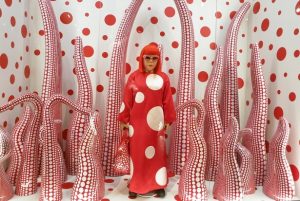
Yayoi Kusama has also become famous for her installation art – she transforms entire rooms into living tree trunks painted in red polka dots. In 2008, one of her works sold for $5.1 million at New York’s Christie’s auction, a record for a living female artist at the time. Once you see her art, you won’t be able to forget it. Kusama is candid about her struggle with mental illness. She is at Seiwa Hospital in Tokyo, from where she travels to her studio.
Hibari Misora / Hibari Misora (1937 – 1989)
Singer, actress and iconic personality As an actress Misora starred in Takekurabe (1955), Izu no odoriko (1954) and Hibari no mori no ishimatsu (1960). However, she is most remembered as an Enki singer. Her first performance was at the age of eight, and the following year she appeared on NHK. For two years she toured Japan. Hibari Misora has recorded more than 1,000 songs, including “Kawa no nagare no you ni.” More than 10 million people voted for this song in an NHK poll as the greatest Japanese song of all time.
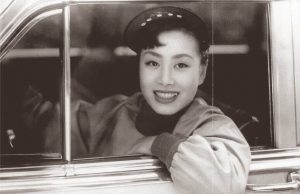
Misora is one of the most commercially successful musicians. She also became the first Japanese woman to receive the Prime Minister’s Medal of Honor. Misora was awarded the Japanese government’s Medal of Honor for her contribution to music and public welfare, inspiring people and giving them hope after World War II. Hibari Misora died at the age of 52 from illness. She reportedly sold more than 80 million records. There are still live, television and radio concerts in Japan in her memory.
Sadako Sasaki (1943 – 1955)
A symbol of innocent victims of war, Sadako lived 1.6 km from where the atomic bomb was dropped on Hiroshima on August 6, 1945. She was two years old at the time. The girl and her family managed to survive. When Sadako was nine years old, however, she developed leukemia, a disease that affected many children in the area.

Sadako’s friend told her the legend of a thousand cranes: if you fold a thousand origami cranes, that person’s wish will come true. Sadako diligently folded paper cranes from any material she could find. But on October 25 of that year she died without achieving her goal. Sadako Sasaki serves as a symbol for children and other innocent victims of war. With funds raised, a memorial was erected in Sadako’s honor in Hiroshima Peace Park in May 1958. To this day, children continue to fold paper cranes to decorate her memorial.
Sadako is a bitter reminder of why Japan included Article 9 (prohibiting war as a means of settling international disputes) in its Constitution.
Kimie Iwata (1947).
The former Executive Vice President of Shiseido Co. Iwata is a rare example of a female leader in Japan. The fact is that in the land of the samurai, according to the Bureau of Gender Equality, women make up less than 1% of the CEOs of top Japanese companies and only 10% of executives in general. After graduating from Tokyo University in 1971, Kimi Iwata immediately joined the Ministry of Labor, where she helped create the Equal Employment Opportunity Act in the mid-1980s.
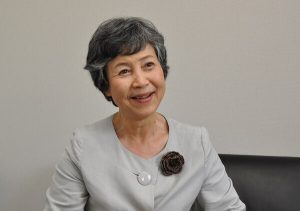
In 2003 she joined Shiseido, Japan’s largest cosmetics company and the fourth largest in the world. Until 2012 she served as the company’s corporate director and executive vice president. Iwata was a strong supporter of female employees at Shiseido and an advocate of a more female-friendly corporate ethic. Kimi Iwata also participated as the main spokesperson of the Women’s Empowerment Forum. She is also a member of the Gender Equality Council.
Chiaki Mukai (1952)
Mukai, a physician and astronaut from JAXA, is the first woman astronaut from Japan and the first national of the Land of the Rising Sun to complete two space shuttle missions, one aboard the space shuttle Columbia in 1994 and another aboard Discovery in 1998. Mukai flew with U.S. Senator John Glenn, who was 77 years old at the time and the oldest person to go into space. Their flight was covered live on television in the United States.
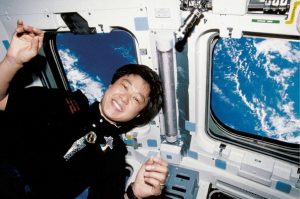
You were introduced to the ten most prominent Japanese women in the country’s history. It was actually very difficult to choose the very best. And perhaps you would like to include other personalities in this top? If so, share your thoughts in the comments.












